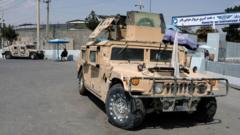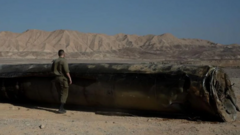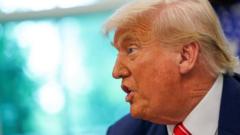Following the Taliban's takeover in 2021, approximately half a million weapons, primarily obtained from US forces, remain unaccounted for, leading to fears of them being sold to militant groups, including al-Qaeda affiliates. The Taliban insists on maintaining strict control over these arms, while the reality highlights ongoing regional security issues.
Concerns Rise Over US Weapons Left in Afghanistan After Taliban Takeover

Concerns Rise Over US Weapons Left in Afghanistan After Taliban Takeover
A significant portion of military equipment abandoned in Afghanistan has reportedly been lost or sold, raising alarms about the resurgence of militant groups and the potential for destabilization in the region.
In the aftermath of the Taliban's return to power in Afghanistan, alarming reports indicate that a substantial portion of military equipment left behind by US forces has been lost, sold, or smuggled to various militant groups. According to anonymous sources interviewed by the BBC, around half a million weapons, including advanced firearms such as M4 and M16 rifles, have disappeared from the Taliban's initial cache of roughly one million weapons obtained after the US withdrawal in 2021.
As the Taliban seized control, many Afghan soldiers deserted, abandoning their military gear, while some weapons were simply left behind by US troops. A former Afghan official disclosed to the BBC that during a meeting of the UN Security Council's Sanctions Committee in Doha late last year, the Taliban acknowledged that at least half of this military equipment is now unaccounted for.
A 2023 UN report revealed that various al-Qaeda affiliates and other militant groups, including Tehreek-e-Taliban Pakistan and the Islamic Movement of Uzbekistan, are obtaining Taliban-captured weapons, either through direct acquisition or the black market. In response to these claims, Hamdullah Fitrat, the Taliban's deputy spokesperson, firmly rejected allegations concerning smuggling or loss of military equipment, stating that all weapons are safely stored.
Despite these assertions, insiders report a thriving black market where local commanders exchange weapons to reinforce their authority. A journalist in Kandahar noted that an arms market flourished for a time but has now shifted to the encrypted messaging platform WhatsApp. There is widespread trading of US weapons and equipment, particularly those abandoned by US-supported forces, as local commanders operate with a degree of autonomy.
The US government's oversight body for Afghan reconstruction, known as SIGAR, reported discrepancies in weapon counts, with previous inventories indicating fewer arms than present estimates. They cited long-standing tracking issues and criticized the Department of State for supplying inaccurate information regarding equipment left behind. In light of former President Trump’s claims that $85 billion worth of weaponry remains in Afghanistan, the actual figures have sparked debate, particularly concerning the definitions of "weapons" and other expenditures.
Zabihullah Mujahid, a chief spokesperson for the Taliban, declared that the weapons they possess were taken from the previous regime and will be used for national defense against threats. The Taliban has paraded captured US equipment as symbols of their triumph and legitimacy before their supporters.
While the Pentagon maintained that US equipment left in Afghanistan was rendered unusable, reports indicate that the Taliban has learned to operate more straightforward military assets while struggling with complex machinery like Black Hawk helicopters. Consequently, fears linger regarding the proliferation of these weapons and their potential use by a range of militant factions in the region.
The former head of SIGAR, John Sopko, labeled any attempts to reclaim US arms from Afghanistan as futile, suggesting the costs would outweigh any potential benefits. Whether or not Trump's administration takes decisive action regarding these weapons remains uncertain, but unresolved concerns about their distribution among armed groups continue to pose a significant threat to regional stability in the wake of the Taliban’s resurgence.





















